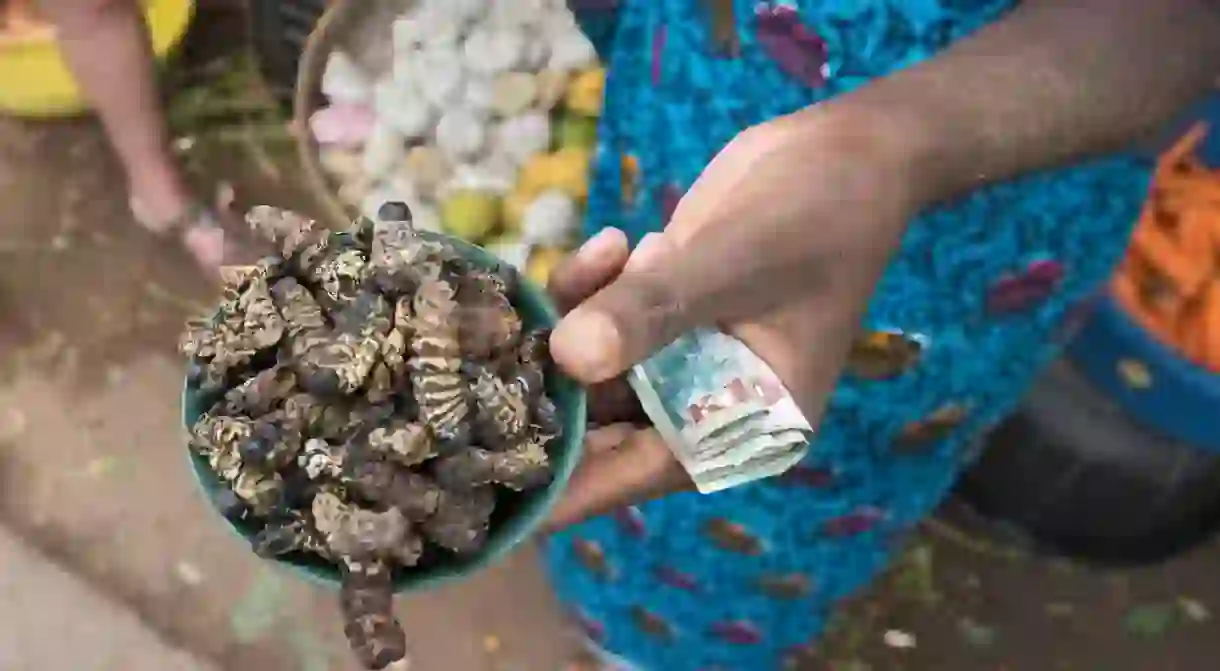9 Traditional Foods You Must Eat While You're in Zambia

Eating is ingrained in Zambian culture, from social events such as barbeques to pre-wedding events where a groom is treated to a buffet of traditional dishes from his bride’s family. If you want to know what’s on the menu, check out our pick of the top traditional foods you must eat while you’re in Zambia.
Nshima
Nshima is the staple carbohydrate of Zambia. It is made from corn that is processed into a fine white powder called ‘mealie meal’. It is cooked by mixing the corn meal with water which is brought to the boil as porridge (similar to grits). More cornmeal is added until it develops a thicker texture. The cornmeal can be substituted for cassava, sorghum and millet. Nshima is served with a protein (usually meat or fish) and one or two vegetables. Nshima can be enjoyed at any of the many traditional restaurants in Zambia as well as at boutique hotels.

Delicacies
Ifinkubala
Caterpillars in Zambia are called ‘ifinkubala‘. They are usually fried in oil, or boiled for a few minutes then fried in oil, and are served with tomatoes and onion with nshima.

Inswa
After it rains, flying ants called ‘inswa‘ are collected. The wings are pulled off and the bodies are fried in oil. They are rich in protein and can be eaten as a snack or served as a side dish with nshima.
https://www.instagram.com/p/BbuJEVwF-JS/?taken-by=zambiankitchen
Vegetables
There are plenty of vegetables that are eaten in Zambia, based on seasonal availability. Popular vegetables include ‘chibwabwa‘, which are pumpkin leaves, ‘katapa‘ sweet potato leaves, ‘bondwe‘ (a species of amaranthus), ‘impwa‘ (a species of eggplant), ‘lumanda‘ (a species of hibiscus), and okra, which is either fried or boiled with bicarbonate of soda.
https://www.instagram.com/p/Bc4sQHOFFa1/?tagged=zambianfood
Chikanda
Chikanda is commonly referred to as ‘African polony’, although it is entirely vegetarian. Made from wild orchid tubers, peanuts, chilli and baking soda, it is cooked until it has a meatloaf consistency, and is served either hot or cold.
https://www.instagram.com/p/BW7Hs3DFqsz/?taken-by=zambiankitchen
Ifishashi
Pounded peanuts are mixed with vegetables such as rape (a type of kale) to make ifisashi, although it can be added to other food items such as kapenta (a small sardine-like fish), sweet potatoes and chikanda.
https://www.instagram.com/p/BURzTFPFQyn/?taken-by=zambiankitchen
Fish
Zambia’s many water bodies produce different types of fish. Some of the most popular are kapenta (small sardine-type fish that are fried in oil, tomatoes and onions), and buka buka, a species of Nile perch, and bream which is either grilled, boiled or dried, and served in gravy with nshima.

Fruit
Traditional seasonal Zambian fruits include wild loquats called ‘masuku‘ which have a plum-like taste, ‘masau‘, which tastes like sour apples, and baobab seeds called ‘mawuyu‘ among others.
https://www.instagram.com/p/BbNHM75lZsA/?taken-by=zambiankitchen
Michopo
Michopo is roasted meat which is usually cooked outdoors on the grill. It is usually beef or goat meat served with chilli or onions, tomatoes and potatoes. Michopo is commonly found at bars as it is great paired with a Mosi (the local lager).
Vitumbuwa
Vitumbuwa or ‘fritters; are fried dough balls of flour, sugar, yeast and water. They are commonly found at markets around Zambia and served in a newspaper. Vitumbuwa are a common 4pm tea time snack.
https://www.instagram.com/p/BZ20UY5FQHh/?taken-by=zambiankitchen













